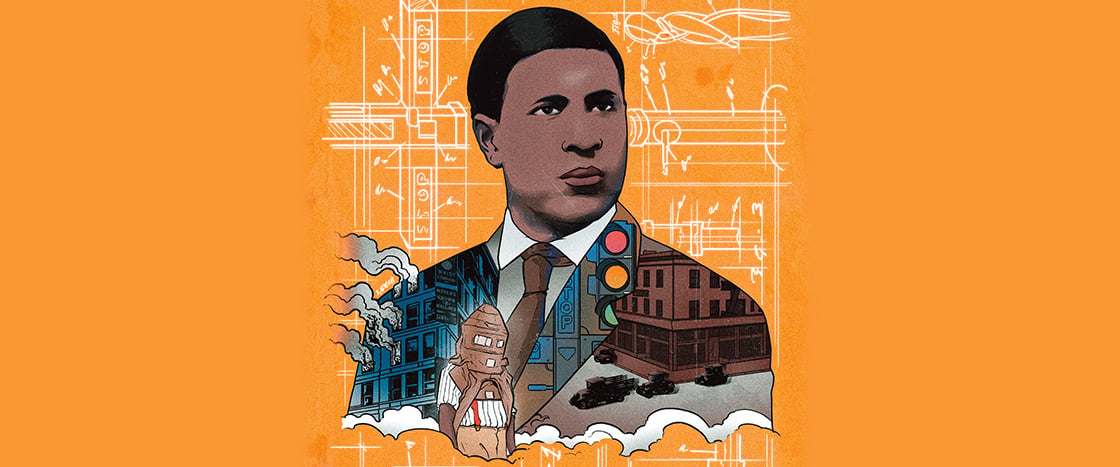IanDagnall Computing/Alamy Stock Photo
Garrett Morgan
Garrett Morgan must have looked ridiculous. He stood on a platform in the middle of Lake Erie in his pajama bottoms. Over his head and shoulders was a bulky hood. Long tubes poked out of its front like elephant trunks.
But Morgan wasn’t thinking about how he looked. It was July 25, 1916. Hours earlier, a powerful explosion had ripped through a tunnel deep under the lake. Two dozen men lay dying in a cloud of poisonous gas. It was up to Morgan to help rescue them, and he was counting on his strange gear to keep him alive.
The hood was Morgan’s invention—a mask that filtered out smoke and dangerous gases. For years, he had been waiting for the opportunity to show the world once and for all that it worked. Now, he finally had his chance.
He was going to prove it—or die trying.
Garrett Morgan probably looked ridiculous. He stood on a platform in the middle of Lake Erie. He was wearing his pajama pants. Over his head and shoulders was a large hood. Long tubes came out of its front. They looked like elephant trunks!
But Morgan wasn’t thinking about how he looked. It was July 25, 1916. There had been a powerful explosion inside a tunnel under the lake. Many men were dying because of dangerous smoke. Morgan was there to help rescue them. And he needed his strange hood to keep him alive.
The hood was Morgan’s invention. It was a mask that filtered out deadly gases. For years, he had been trying to show the world that it worked. Now, he finally had his chance.
He was going to prove it—or die trying.

